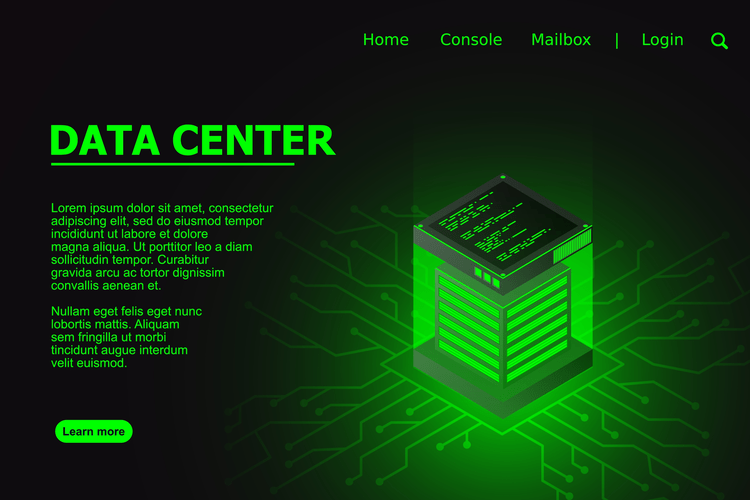Cloud computing is geo-distributed, which means that it depends on a community of cloud servers which are usually spread out throughout multiple geographical areas. The integration of information is a key issue that differentiates cloud computing from fog computing. Cloud computing depends on centralized information storage, with all processing and evaluation going down at a central location. Heavy.AI also offers a fog computing solution that can be utilized to manage and course of knowledge from IoT devices on the edge of the network. This resolution can enhance the performance of IoT functions by decreasing latency and making certain knowledge is processed domestically. Some experts believe the anticipated roll out of 5G cellular connections in 2018 and past could create more opportunity for fog computing.
- Edge computing is a subset of fog computing that includes processing data right on the point of creation.
- Traffic alerts automatically flip pink or stay green for an extended time based mostly on the data processed from these sensors.
- The consortium’s major objectives had been to both promote and standardize fog computing.
- All data transmission must be encrypted, particularly for the explanation that switch mode is primarily wi-fi.
- With cloud computing, a central community of storage and processing assets is used, usually comprising 1000’s and even tens of millions of nodes.
- The good thing for the customers is fog and cloud computing can complement one another.
Cloud storages are more difficult to focus on because of their remote position and safety practices. In the longer term, devices can use beforehand collected data to detect vulnerabilities earlier than they even present. Cloud know-how already brings multiple advantages to the Internet of Things, however progress doesn’t cease here. Right now, cloud, fog and edge applied sciences provide irreplaceable options to many Internet of Things challenges.
Apply Access Control On The Fog Node Layer
IFogSim is also an open-source fog computing simulator that can consider the efficiency of different fog computing architectures. IFogSim includes a library of modules that may simulate varied features of fog computing, corresponding to community topologies, system varieties, and application characteristics. Fog computing is an important trend to grasp for anybody working in or planning to work in expertise. It has many potential applications, from industrial and manufacturing settings to hospitals and other healthcare services. So, edge and fog computing are finest suited to use instances where the IoT sensors might not have the most effective internet speed. The good thing for the customers is fog and cloud computing can complement one another.
Smart cities aspire to be automated at each front, from rubbish collection to site visitors administration. Fog computing is particularly pertinent when it comes to visitors regulation. Sensors are set up at traffic signals and highway barriers for detecting pedestrians, cyclists, and autos. Speedometers can measure how fast they are traveling and how doubtless it may find yourself in a collision. Traffic indicators routinely flip pink or keep green for an extended time based mostly on the knowledge processed from these sensors.
Dependence On The Quality Of Core Community
Overall, whereas both cloud and fog computing have their respective advantages, it may be very important carefully consider which mannequin is best suited on your explicit wants. Heavy.AI is a robust artificial intelligence platform that enables companies and developers to easily build and deploy AI-powered applications https://www.globalcloudteam.com/. Heavy.AI is constructed on high of the popular TensorFlow open-source library, making it easy to get started with deep learning and neural networks. With Heavy.AI, you can shortly train and deploy your custom models or use one of the many pre-trained fashions out there in the Heavy.AI marketplace.

These computing applied sciences differ in their design and objective but typically complement one another. Let’s take a look at the important thing advantages of cloud, fog and edge computing to raised understand the place to make use of every of these approaches. The storage choices at every sensor degree depend upon the sort of sensors supported by the group. Big media libraries work best with rotating disks, while native flash chips are good for safety keys, log files, and tables. Anything that requires large in-memory storage needs a data server, though this have to be averted from the fog structure altogether. When selecting hardware, it is very important contemplate the value of storage per GB.
This implies that cloud computing tends to be extra susceptible to points with quality and consistency than fog computing since failures at one location affect the entire system. Ultimately, whereas both fashions have their advantages and downsides, it is clear that cloud computing isn’t an excellent possibility for all functions and industries. This implies that data has to travel all the best way from one person’s system up to a centralized server and again down again so as to be processed by other customers.
With fog computing, you see a decentralized strategy that makes use of the sting of the community for information storage and processing. On the cloud, knowledge is distributed to dozens of servers, whereas edge computing makes use of lots of, probably 1000’s of local nodes. Each system can act as a server within the edge network and process information independently. To break into, hackers would need synchronized entry to 1000’s of distributed devices, which is virtually inconceivable. Edge computing is a subset of fog computing that involves processing information proper on the point of creation.
What Are The Disadvantages Of Fog Computing?
All information transmission have to be encrypted, particularly for the reason that transfer mode is primarily wi-fi. Application signature validation is another essential step with application service requests. Even when saved temporarily, delicate user knowledge is certain by compliance laws. User conduct profiling is one other feature that adds an additional layer of security. In a traditional cloud-based setup, customers instantly entry companies from the cloud.
Fog computing uses a person networking panel for information processing as a substitute of utilizing centralized cloud platforms. It allows customers to retailer, calculate, talk and course of information by letting them entry the entry factors of assorted service suppliers. Fog acts as a middle layer between cloud and edge and supplies the benefits of both. It relies on and works immediately with the cloud handing out knowledge that do not need to be processed on the go.
With cloud computing, you possibly can scale up and down the useful resource and infrastructure utilization according to your requirements. We will assist you to remove these uncertainties and navigate by way of fashionable cloud and knowledge options. You can leverage our experience in IoT software development, cloud computing, ETL pipeline development and large information analytics companies, to decide on the proper strategy for your project. A safety breach in IoT networks may mean compromising whole companies and industries, affecting millions of related gadgets and individuals who use them.

By contrast, within the traditional centralized model of cloud computing, information and functions are stored in a central location and accessed over the network. Fog computing is a time period for technology that extends cloud computing and providers to the edge of an enterprise’s network. It permits information, purposes, and different sources to be moved closer to, or even on top of, end customers. Remember, the objective is to have the power to process information in a matter of milliseconds. An IoT sensor on a manufacturing unit floor, for example, can probably use a wired connection.
When leveraged well, these computing frameworks can empower businesses to boost operational effectivity and foster correct decision-making, ultimately accelerating revenue advertising efforts. History of fog computing The term fog computing was coined by Cisco in January 2014. It was meant to convey the computational capabilities of the system close to the host machine. After this gained somewhat reputation, IBM, in 2015, coined an identical term referred to as “Edge Computing”.
Enterprises are inclined to go for a centralized approach with technical infrastructure as administration becomes straightforward. Setting up a decentralized set of heterogeneous fog gadgets throws up new challenges by means of maintenance and compatibility. No matter the business vertical, today’s enterprises see an outpouring of knowledge from shoppers.
Still, cloud computing remains in style due to its greater flexibility and will increase scalability, making it best for a extensive range of use circumstances. Overall, selecting between these two methods fog vs cloud computing relies upon largely in your particular wants and targets as a consumer or developer. In 2015, Cisco partnered with Microsoft, Dell, Intel, Arm and Princeton University to form the OpenFog Consortium.
According to the OpenFog Consortium started by Cisco, the key distinction between edge and fog computing is the place the intelligence and compute energy are placed. Fog computing is the thought of a distributed network that connects these two environments. For occasion, in purposes like IoT (Internet of Things), fog computing enables stakeholders to perform real-time information analysis at the system stage. This eradicates the want to ship data to the cloud and improves effectivity. Cloud computing comprises the delivery of computing providers, together with knowledge storage, servers, networking, analytics, and intelligence over the Internet.